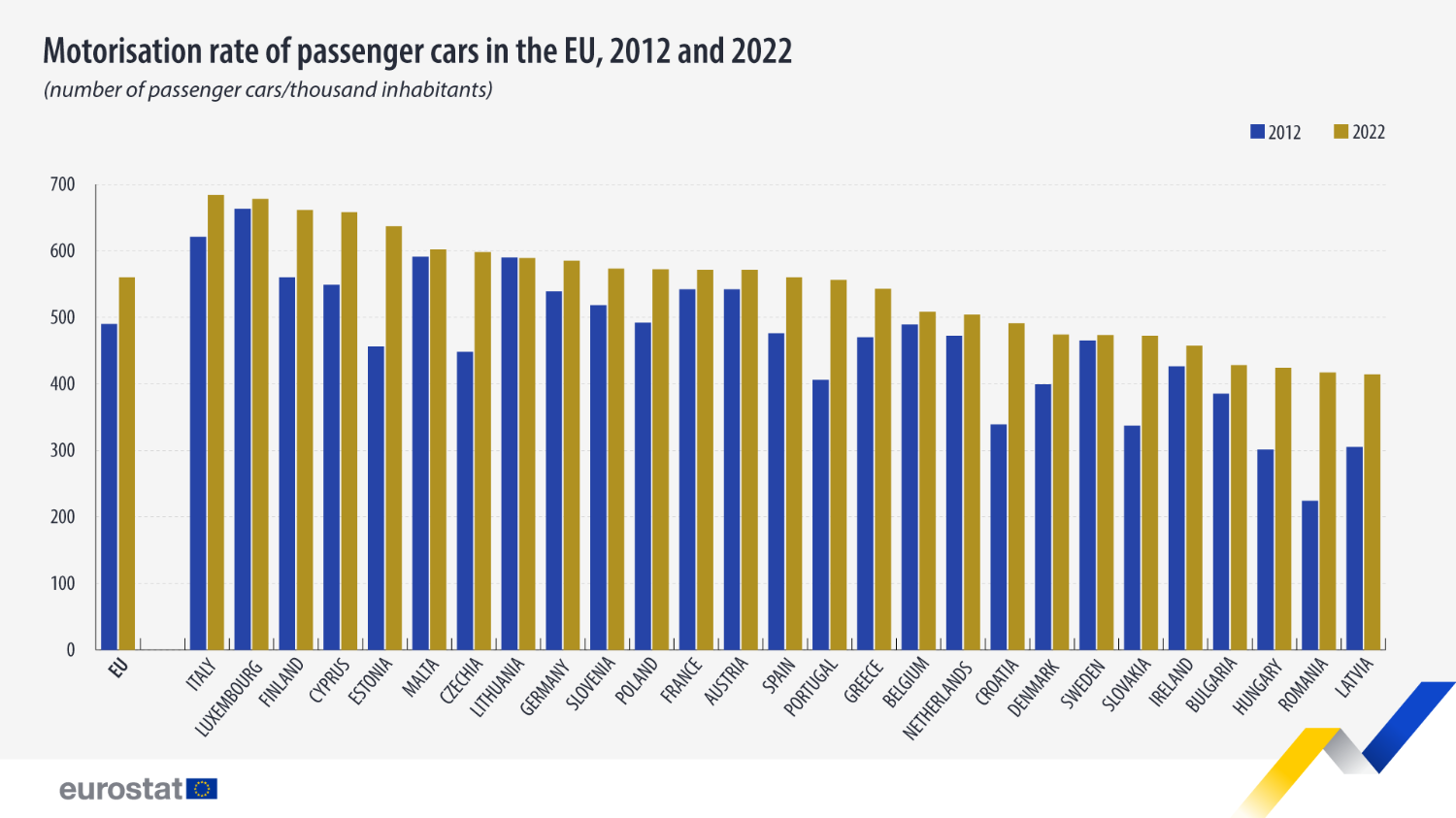The car: luxury or lifeline?
Car-free and car-less, negative consequences?
The space taken up by cars is a growing problem. Car-free and car-less neighbourhoods are on the rise. This does have negative consequences, such as segregation and the creation of uniform enclaves.
Many cities need to find solutions to the growing number of cars. The car conquered a dominant place in our lives in recent decades - and not without reason. It forms the backbone of
commuting;
provides indispensable flexibility; and
contributes to economic mobility.

Growing number of passenger cars in the EU
People value their car - it is their personal space, the moving piece of their home in which they feel free and independent. Car use remains unabatedly high and is not expected to change in the future. But especially in cities, the space taken up by cars is a growing problem.
That is why many cities are experimenting with car-less or even car-free neighbourhoods. Where cyclists and pedestrians are king and the car has been pushed to the margins. The benefits are undeniable: children can play freely, the air is cleaner and the streets look quieter and greener.
Intensive human accumulation
In more and more urban plans, parking facilities will be scarce: there is less than one expensive parking space per 2 to 6 houses, in garages on the edges of the neighbourhood. Urban designers assume car ownership will be more than two to three times lower than the already low average in larger cities.
Luxury or lifeline?
With urban plans for intensive human accumulation, it is understandable that every square metre counts and that you prefer to exclude the space-inefficient car. However, the fear is that makers and doers will not feel very much at home in these new urban plans in favour of highly educated, progressive urbanites who can afford to live without a car.
For a factory worker or healthcare worker with irregular shifts, or truck driver, the car is often not a choice, but a necessity. For these people, the car is not just a luxury, but a lifeline.
A new form of segregation?
A new form of segregation is looming - not based on ethnicity or income, but on lifestyle and professional practice. Neighbourhoods with a one-sided composition of residents increase the risk of polarisation, misunderstanding and social isolation, as people hardly come into contact with other lifeworlds. This can lead to a monotonous, vulnerable environment with one-sided amenities and crumbling social cohesion.
World of academics
In some urban plans, efforts are being made to use shared cars and nearby public transport, but these will provide little relief in practice. For decades, policy reports have outlined a future in which the car would become obsolete, replaced by shared mobility and multimodal transport. This vision seems to stem mainly from a world of academics and urban planners, who themselves function perfectly well without a car.
Public transport
Rarely an alternative for makers, doers and healthcare workers;
requires a huge amount of public money (subsidies); and
diminishing service levels is not a problem for hipsters, expats and older people with only a few visitors.
More parking facilities?
Hopefully, there will still be room for adequate parking facilities, and urban planners will realise that these could well be partly subsidised, just as shared cars and public transport also need subsidies.
Out of sight, not out of society!
Yet there is no doubt that urban planners are trying to anticipate the mobility issue of the future: scarce space. More than ever, the car will have to disappear from sight in urban areas. Out of sight, but not out of society. It is too functional, too efficient, too affordable and too important to prevent neighbourhoods turning into uniform enclaves.
So hide the car, but don't drive it away.
Source: A liberal extract from the column by Carlo van de Weijer of TU Eindhoven in FD (Dutch Financial Newspaper), March 28th 2025.
